Archive
2020
KubaParis
merotopia
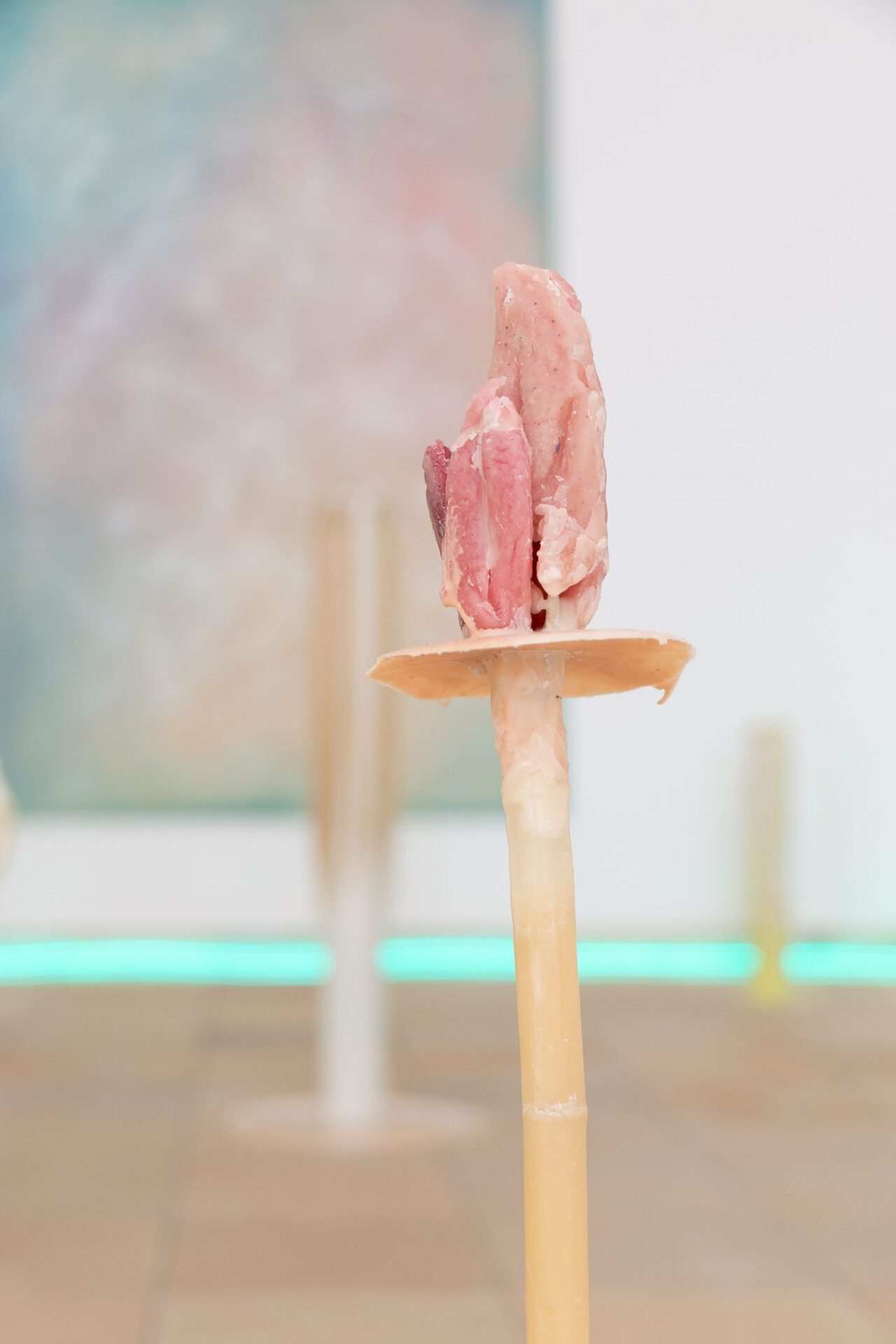
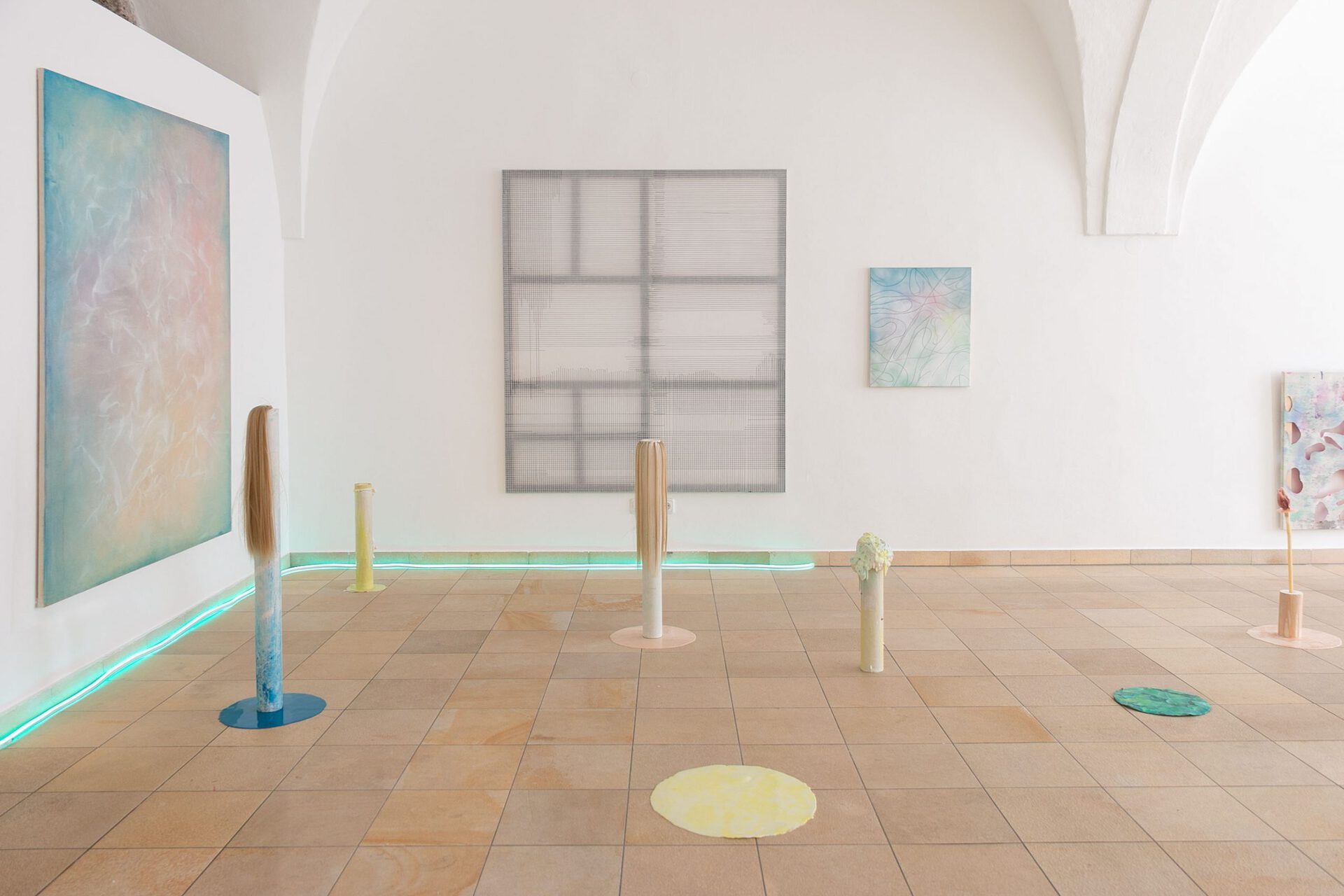
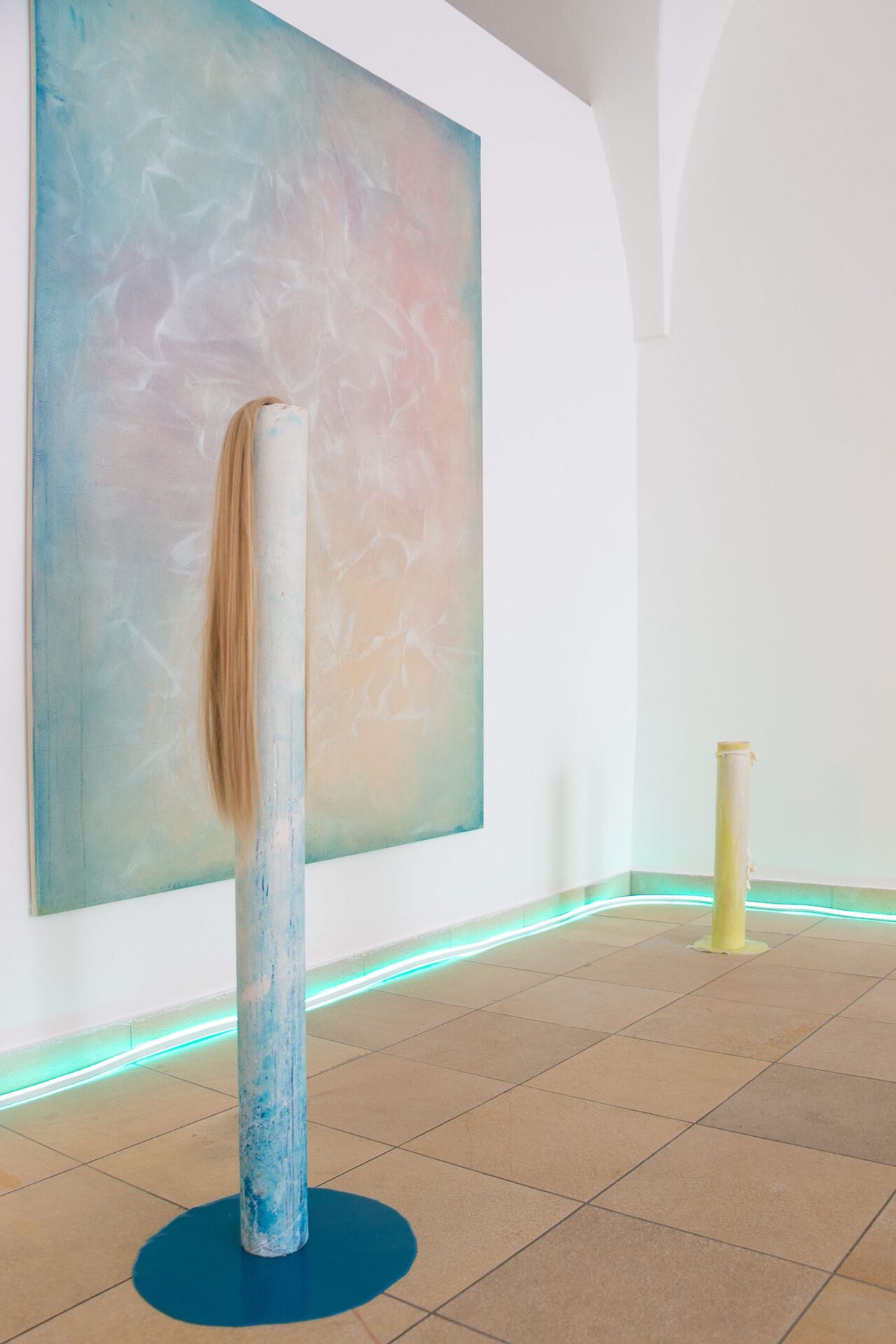
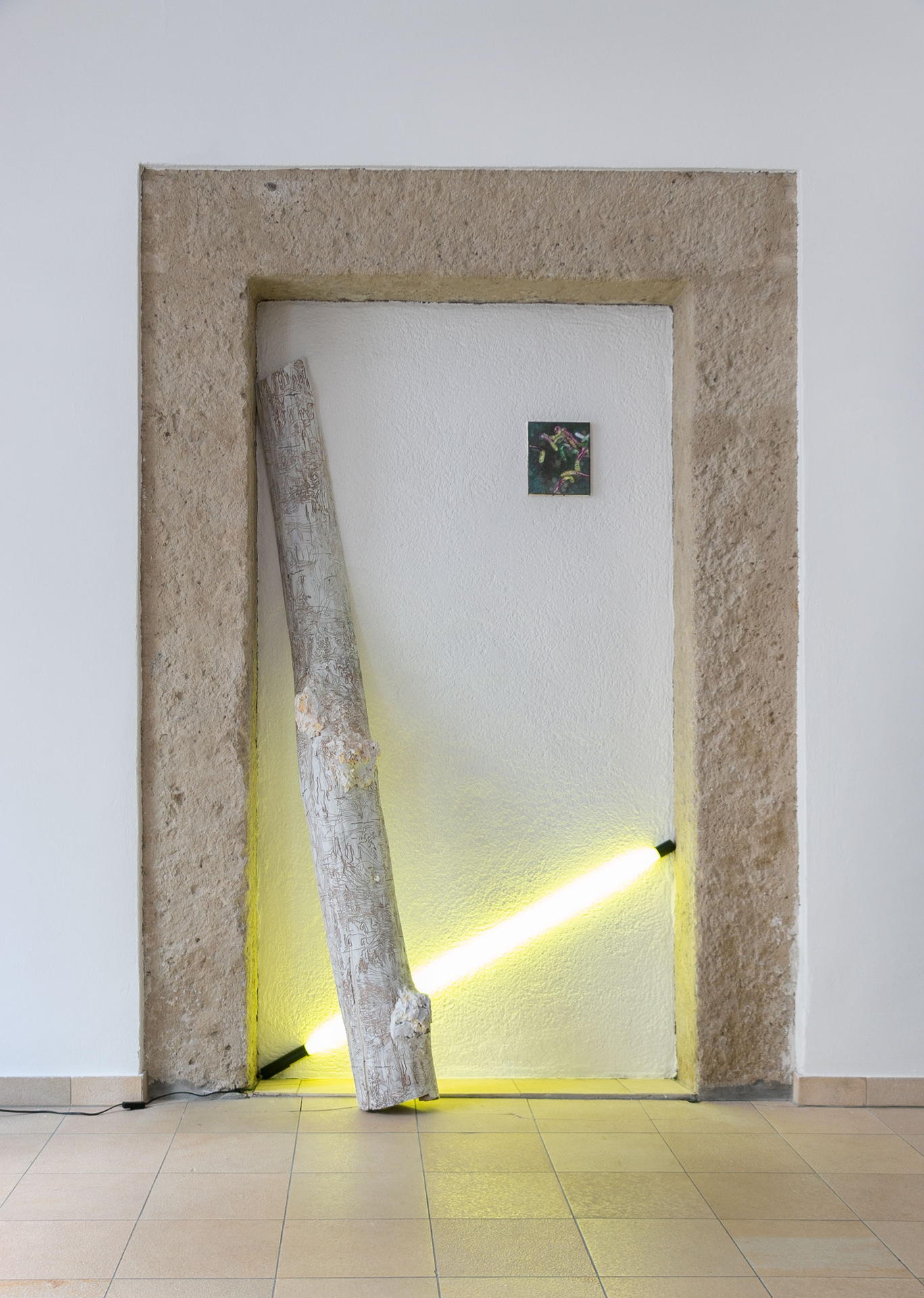
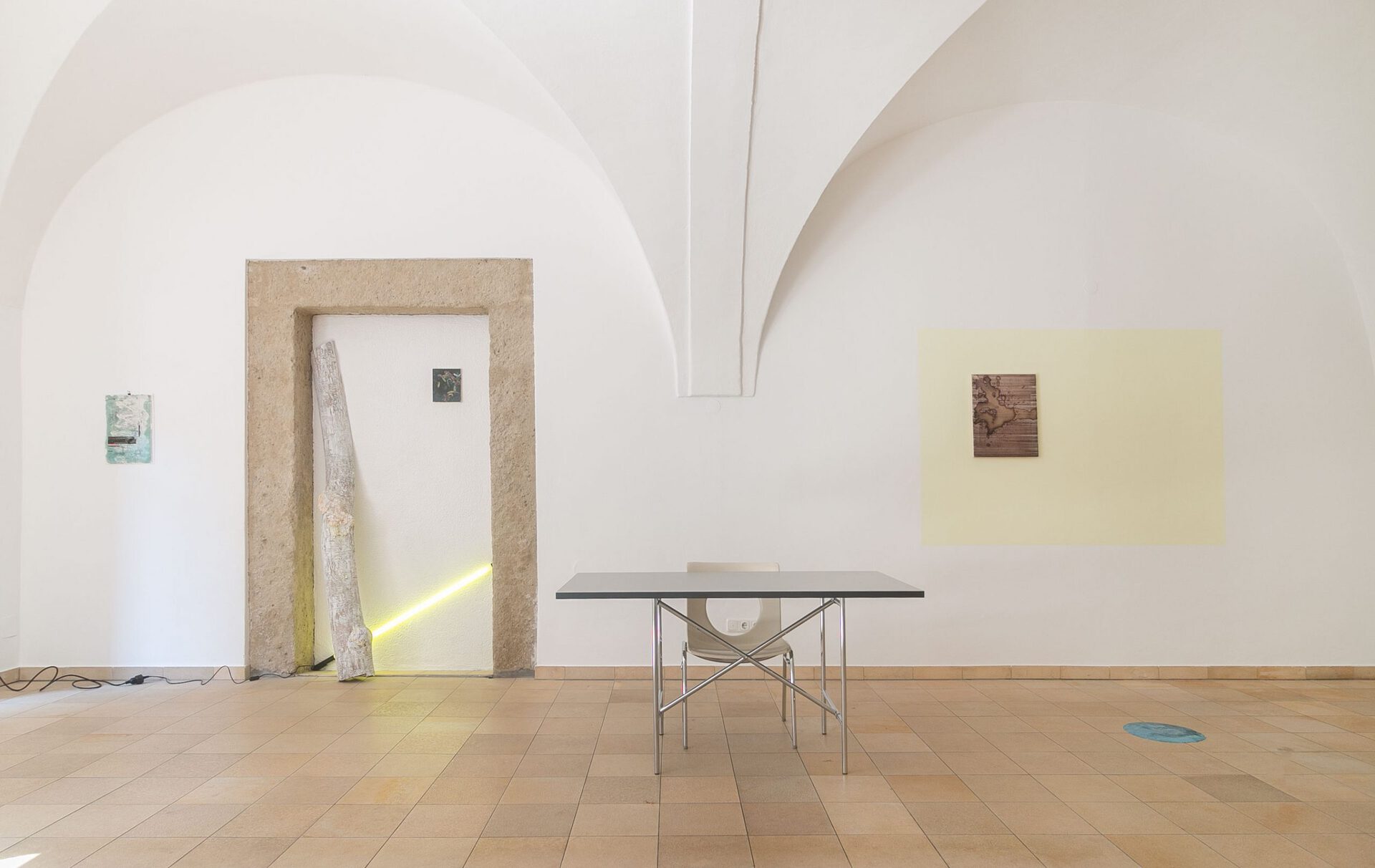
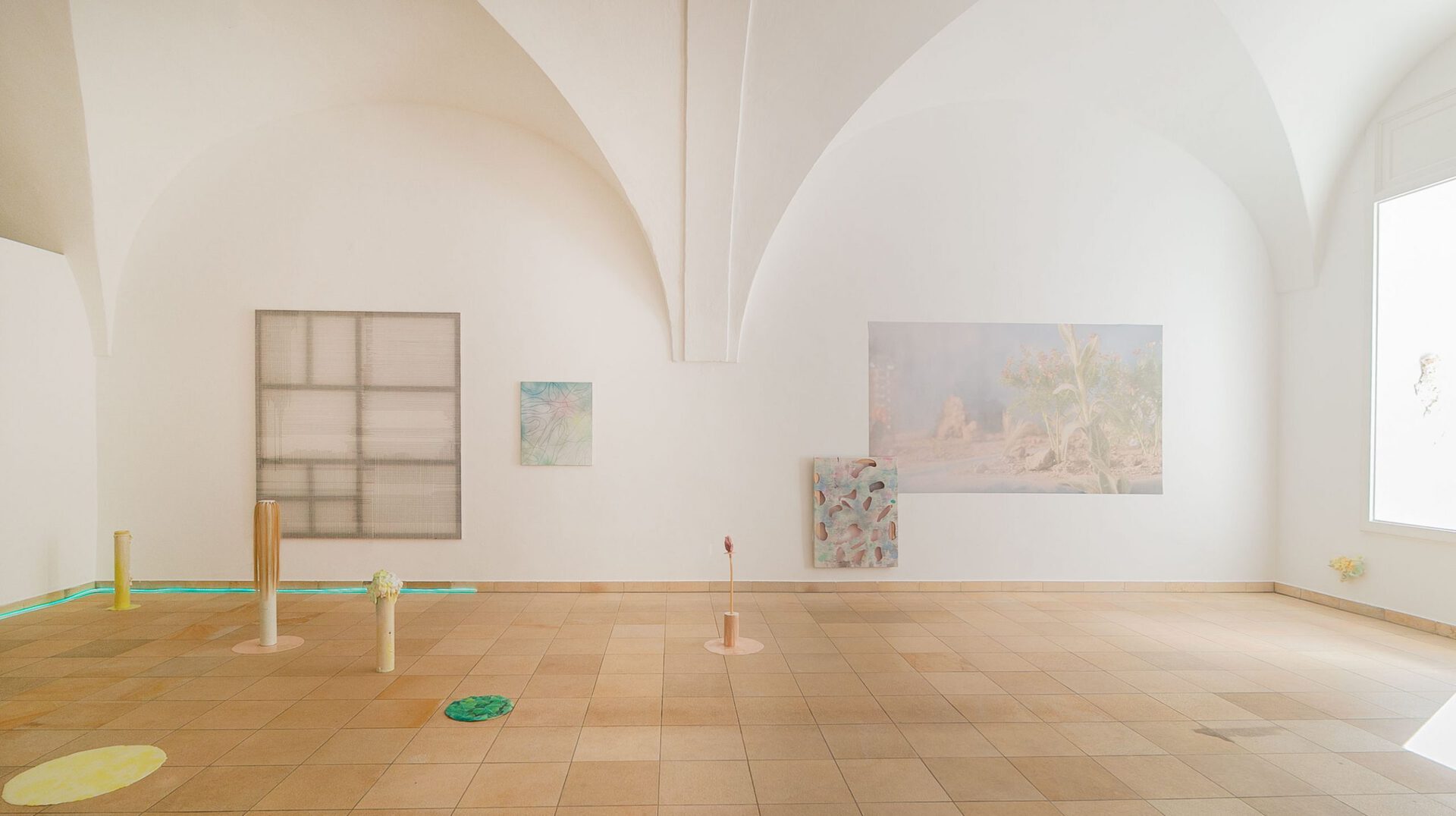
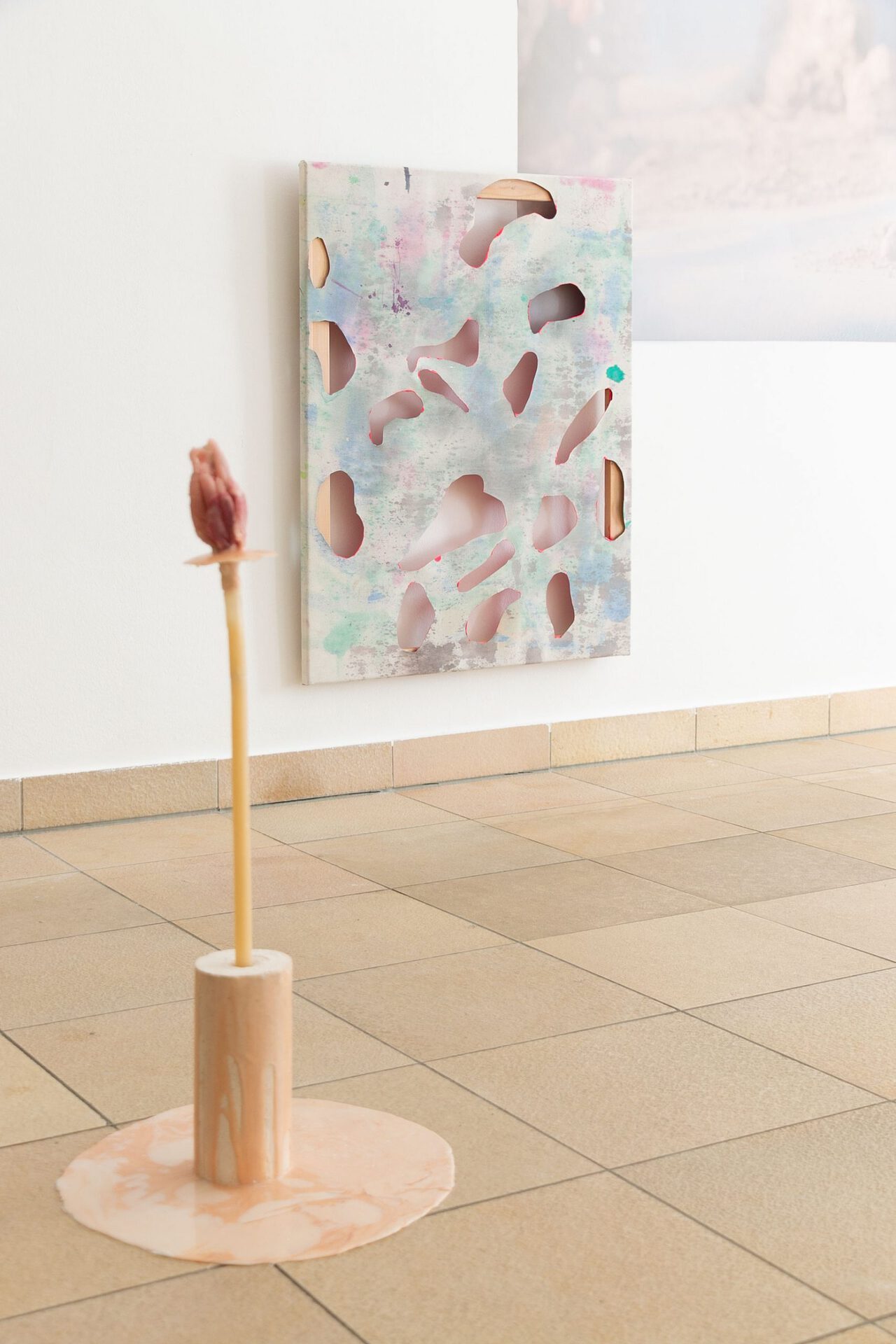
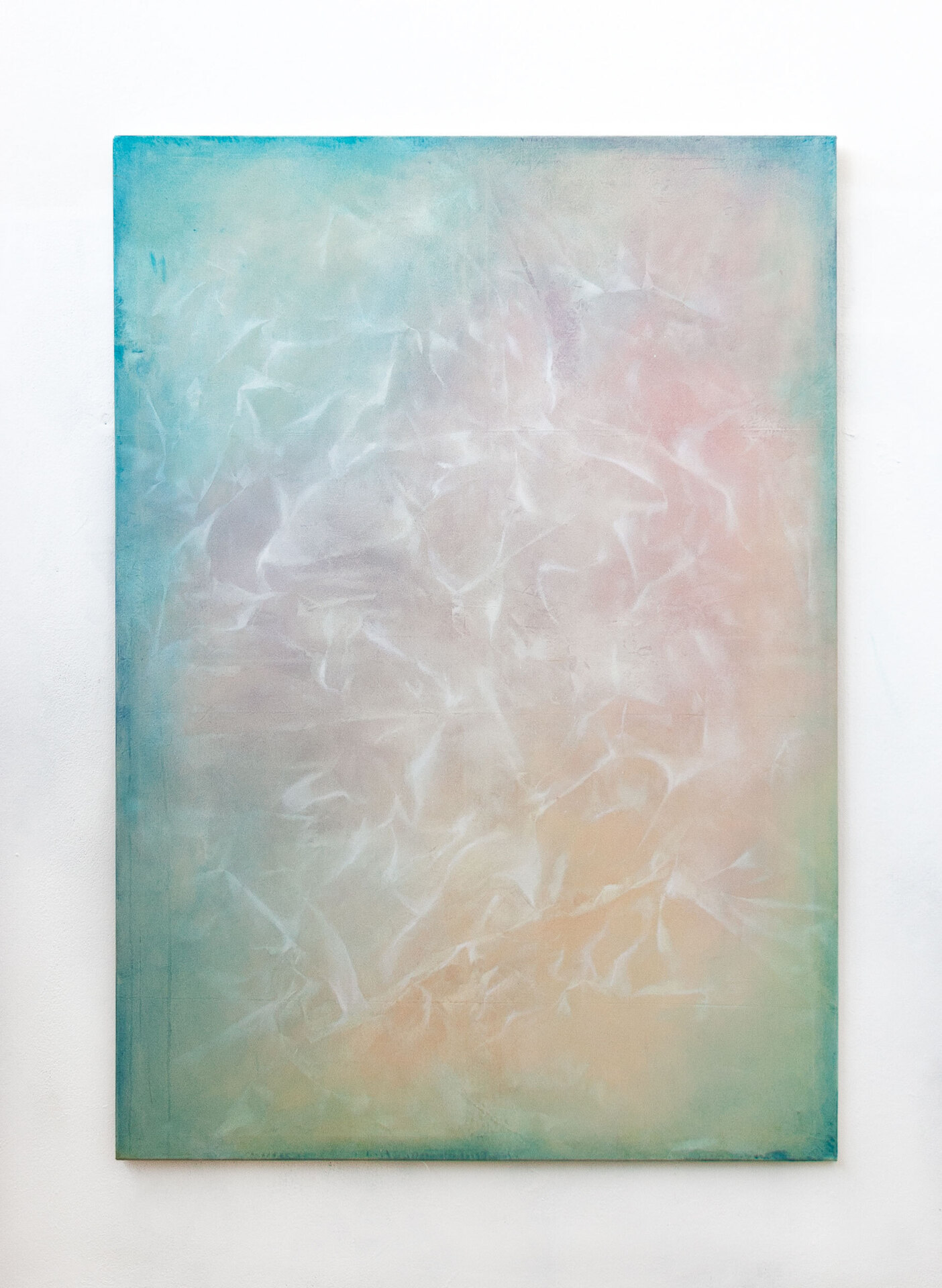
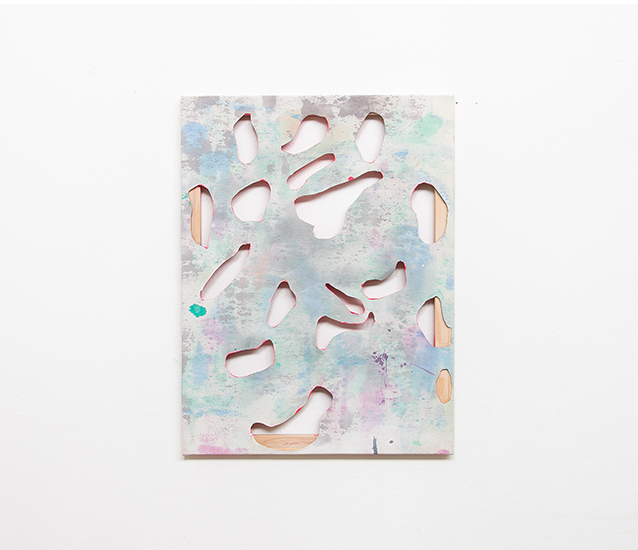
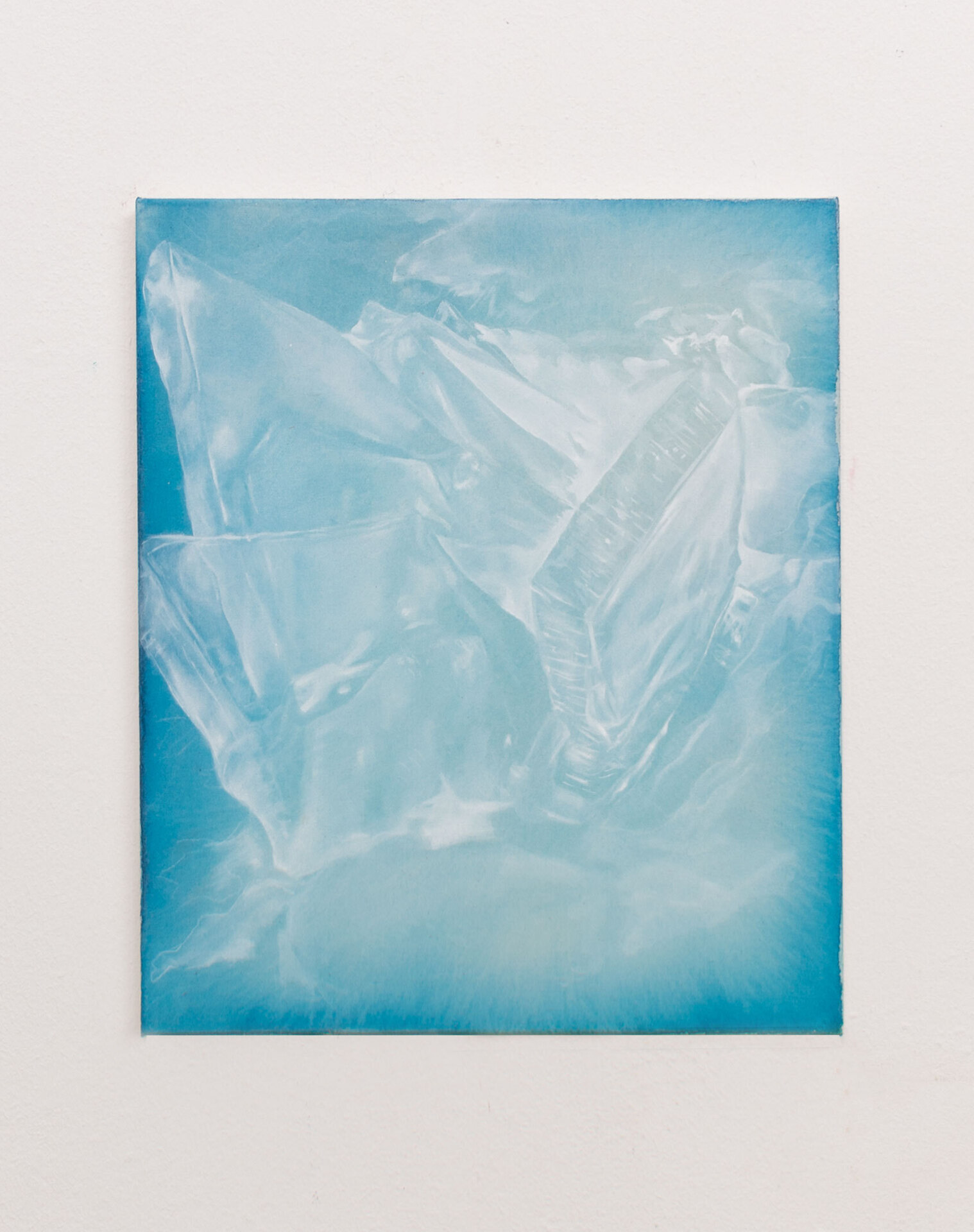
Location
Galerie Sophia VonierDate
08.07 –14.08.2020Photography
Courtesy Galerie Sophia Vonier | Johanna BinderSubheadline
MEROTOPIA is a site-specific installation by Salzburg based artist Johanna Binder, including painting, objects and photography to transform the gallery space into a terrarium. The unauthentic, appropriated forms of nature and it's representation in the space change the perception of the visitor - who was a viewer from outside - so he or she becomes the watched inhabitant of the vivarium.Text
MEROTOPIA.
The merotope is a “part of a place” and in ecology describes the
smallest unit of a biotope - for example a tree trunk - that can be
inhabited by an organism. Such reduced habitats also exist in
artificial forms as terrariums or palm houses with well-tended plants
and animals. They are imitations of nature and appropriations by
humans. In the history of poetics and art, the principle of imitation/
imitatio of nature is called mimesis and describes the aesthetic
interpretation or the representation of reality. However, the mimetic
ability to 'do something similar' must also be thought in the context of
social life, since it affects almost every human action, thought and
imagination.
In her multimedia installation MEROTOPIA, Johanna Binder reflects
on the relationship between humans and nature and the view on art.
She appropriates the gallery space and stages it as a kind of
terrarium, a curated living space for unknown residents. From the
outside, the passers-by see a scenario through the glass panes that
may seem familiar to them as a place for art and yet is alien. As you
walk through the interior, the perspective changes and the visitors
themselves become observerd in a vivarium. The view from the
outside is an important coordinate in the artist's work. Binder is
interested in the seemingly insoluble paradox of research and within
that excluding the own predisposition. The danger is to impose one's
own in others - like the terrarium, which is created after an
imagination of naturalness. If existing hierarchies, structures and
systems are unknown, the view focuses on external appearances,
surfaces and details.
Binder transfers this deconstructing and isolating approach into her
paintings and graphics by picking out individual details and shapes,
letting rasters and lines fall apart, perforating canvases, piercing
papers and breaking up number rhythms. Do organic tumors have an
internal order and hierarchy that we cannot measure with our
measuring instruments? Which categories can be used to create
artificial realities that are 'viable'? These explorations express
themselves in Binder's process-oriented way of working, as do the
considerations of logic and intuition, the reflection on an artificial and
a natural order of things.
For the artist, an important starting point for the conception of
MEROTOPIA was how people deal with nature as a metaphor for the
relationship to other forms of society and cultures. The ideas of the
western world of nature and landscape are shaped by the
romanticism and the utopia of the union of human and nature. It is
presented as a beautiful, idyllic or dramatically unleashed dream
space, a retreat from society. With MEROTOPIA, Binder contrasts this
understanding with a more realistic one that negotiates the
empowerment and control of other habitats. It prompts us to look
closely, to change our perspective and to see our own world through
the eyes of a foreign world.
Text: Marijana Schneider
Marijana Schneider